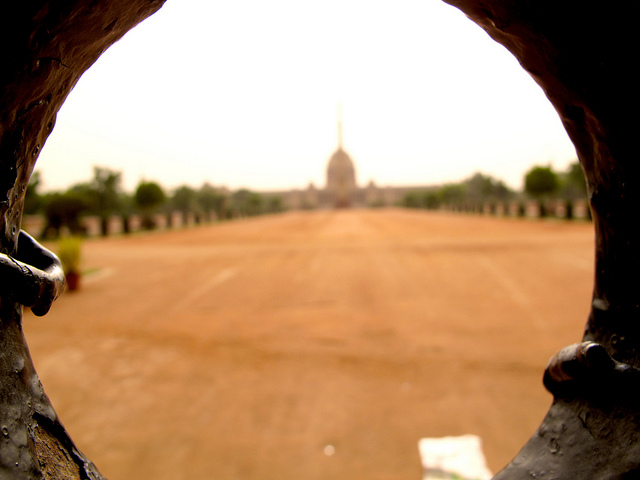The Indian General Election is the world’s largest, and the country’s most significant in years
India, the largest democracy in the world with 814 million eligible voters, is in the midst of an election to choose its next Government. The contest covers 28 states and 9 Union territories, and takes place in nine phases. Rekha Diwakar argues that these elections mark a cross-roads for India’s governance, with a clear and decisive result creating space for increased political stability, while a fractured mandate could usher in an era in instability, opportunistic politics and policy incoherence.
With more than 814 million electorate India stands as the largest democracy of the world. At the time of its independence, few expected it to survive as a democracy given a large, poor and uneducated population. However, India has not only survived but successfully held 15 parliamentary elections so far, and is now in the middle of the 16th. There are 543 parliamentary constituencies where elections are being held to elect members to the Lok Sabha – the lower house of the Parliament and the principal legislative body. Article 324 of the Indian Constitution requires the elections to be held before the term of a Lok Sabha expires, which happens on 31st May for the 15th Lok Sabha. Congress-led UPA (United Progressive Alliance) coalition has been in power since 2004 with Manmohan Singh as the Prime Minister, but has struggled in its second term after 2009 due to issues such as corruption, indecision and lack of good governance.
Indian elections are a mammoth exercise covering 28 states and 9 Union Territories supervised by Election Commission of India, a constitutional body. The 2014 elections are being held between 7th April and 12th May in nine phases, making them the longest and the most expensive in the country’s history. Remarkably, the results will be declared soon after on 16th May due to the use of Electronic Voting Machines (EVM) which were first introduced in 2004 elections. India follows Single Member Plurality System (SMPS) or the First Part the Post (FPTP) electoral system, and the political party or coalition bloc winning a majority of the seats would form the next government. A key electoral reform that comes into force in the 2014 elections is the ‘NOTA’ (Not any of the above) choice for the voters. However, since election results are not nullified if a certain percentage of voters chose NOTA, it just remains another button on the EVM.
Since the 1990s, the Indian party system has witnessed fragmentation due to the growing importance of regional and state parties. As a result, the two main national parties – Congress and the Bharatiya Janata Party (BJP) have become increasingly incapable of forming governments on their own. This in turn has led to an era of coalition governments, which have often included a large number of parties making them unstable and unwieldy. In this election, Congress led UPA and the BJP led National Democratic Alliance (NDA) are the key blocs competing to form the national government. However, the composition of these blocs has not remained the same, and coalition partners have tended to join and leave based more on opportunistic politics rather than ideology.
Many important regional and state parties have decided not to join either UPA or NDA, and few of them have come together to form a loose ‘Third Front’ offering another alternative to voters. Although this front is not likely to be a contender to form the government but it can play a role government formation in case none of the two main blocs is able to win a clear majority. Then there are some other important regional and state level parties, which are contesting elections on their own, and will only decide which bloc to support after the election results are declared. This kind of post-election opportunistic alliance making has become a regular feature of Indian politics, and continues in the current election.
An interesting feature of this election is the emergence of Aam Aadmi Party (AAP) which was formed in 2012 out of an anti-corruption civil society movement of 2011. It got spectacular support and was able to form the government in the Delhi state elections in 2013. However, it only lasted for 49 days in office and resigned, claiming that it was not getting adequate support from Congress and BJP in passing key legislations in Delhi state assembly. Although AAP is not expected to win many seats in this election, it could affect the outcome in some marginal constituencies.
The key leadership contest is between the incumbent Congress’s Rahul Gandhi and Hindu nationalist Narendra Modi of the BJP. Rahul Gandhi belongs to Nehru-Gandhi dynasty which has given India three Prime Ministers, and is the son of Sonia Gandhi, the current President of the Congress party. However, he is seen as being an inexperienced and reluctant politician. Narendra Modi on the other hand is seen as a charismatic leader who has risen from humble origins to be the Chief Minister of the state of Gujarat, and is credited by many for effective governance and development in Gujarat. However, he is seen as a controversial figure for his alleged role in anti-Muslim riots of 2002 in Gujarat, although he has been cleared of these charges by Courts.
Congress’s manifesto stresses ‘inclusive growth’ and promises a range of welfare schemes including a right to healthcare for all, pensions for the elderly and disabled, and extension of job reservations for backward castes to the private sector. BJP’s manifesto focuses on development, improving the economy, expanding infrastructure, curbing corruption and delivering efficient governance. The factors of caste, community and identity continue to be important in Indian elections, although BJP and AAP in particular are attempting to focus their campaigns on the issues of development and effective governance.
In addition to the traditional ways of campaigning, parties have also extensively used social media to communicate with voters. BJP has used ‘Chai Pe Charcha’ – a discussion over tea and Rahul Gandhi has held road shows and local meetings as part of their campaigns. Towards the sixth and the seventh phase of elections, campaigning has become personal, bitter and acrimonious. Consequently, Election Commission has issued warnings and taken action against many parties and candidates for violating its ‘Model Code of Conduct’. The 2014 elections are now in their last two phases, and have been largely peaceful except incidents in Jharkhand and Bihar where anti-Government Maoist rebels caused landmine explosions killing 14 poll officials and security personnel. Voter turnout has been impressive so far and higher than what it was in the 2009 elections.
Opinion polls have predicted major gains for BJP led NDA, although whether it will achieve a clear majority is still an open question. The 2014 elections are one of the more significant ones in the recent memory, where a clear outcome will facilitate political stability and economic development, while a fractured mandate would result in instability, continuance of opportunistic politics and policy incoherence.
—
Note: this post represents the views of the author and not those of Democratic Audit or the LSE. Please read our comments policy before posting. The shortened URL for this post is: https://buff.ly/1jCDNmB
—
 Dr Rekha Diwakar is a Lecturer in Politics at the University of Sussex
Dr Rekha Diwakar is a Lecturer in Politics at the University of Sussex






 Democratic Audit's core funding is provided by the Joseph Rowntree Charitable Trust. Additional funding is provided by the London School of Economics.
Democratic Audit's core funding is provided by the Joseph Rowntree Charitable Trust. Additional funding is provided by the London School of Economics.
The Indian General Election is the world’s largest, and the country’s most significant in years https://t.co/pVbObsOIAA
The Indian General Election is the world’s largest, and the country’s most significant in years https://t.co/OWd9LBn7eE